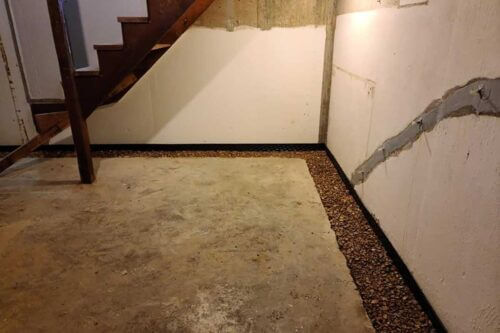
Keeping your basement dry is essential to protecting your home’s foundation and preventing water damage, mold growth, and costly repairs. If you’re experiencing basement moisture issues, understanding the different basement waterproofing systems available can help you make the best decision for your home. The two main approaches are interior waterproofing and exterior waterproofing. Each has its own benefits and applications. Read on to explore the differences between interior and exterior waterproofing systems and determine which is best for your home.
At Cornerstone Structural Repair & Waterproofing, we specialize in providing effective basement waterproofing solutions in St. Louis, backed by our life-of-structure warranty. Contact us today to request a quote or learn more about the best option for your home.
Interior Basement Waterproofing Systems
Interior basement waterproofing focuses on managing water that has already entered your basement. These solutions redirect water away from your foundation to keep your basement dry and prevent further damage.
1. Interior Drain Tile System
An interior drain tile system or French drain installation consists of a series of perforated pipes installed beneath the basement floor. These pipes collect water that seeps in and direct it to a sump pump, which then pumps the water away from your home.
Benefits:
- Highly effective at preventing standing water in the basement.
- Can be installed without major excavation.
- Works well for homes with persistent moisture issues.
2. Sump Pump Systems
A sump pump system is a critical component of many basement waterproofing systems. Installed in a sump pit, the pump removes accumulated water and directs it safely away from your foundation.
Benefits:
- Prevents basement flooding during heavy rain.
- Can be combined with a battery backup system to work during power outages.
- Helps maintain a dry and healthy basement environment.
3. Waterproof Coatings and Sealants
Waterproof coatings and sealants can be applied to basement walls and floors to create a moisture-resistant barrier. Additionally, vapor barriers are commonly used in crawl spaces. These products help reduce dampness and minor seepage issues.
Benefits:
- Quick and affordable solution for minor leaks.
- Can improve the aesthetic appearance of basement walls.
- Works well when used in conjunction with other waterproofing methods.
Exterior Basement Waterproofing Systems
Exterior waterproofing is designed to prevent water from reaching your foundation in the first place. These solutions typically involve excavation and the installation of drainage systems around the foundation.
1. Exterior Foundation Sealing
A waterproof membrane is applied to the exterior of foundation walls to prevent water penetration. This method requires excavation around the home’s foundation but provides a long-term waterproofing solution.
Benefits:
- Stops water before it enters your basement.
- Highly effective for homes with severe moisture problems.
- Long-lasting protection against leaks.
2. French Drain Installation
French drains are subsurface drainage systems that redirect water away from the foundation. When installing an exterior French drain, a trench is dug around the home, lined with gravel, and fitted with a perforated pipe to channel water away.
Benefits:
- Reduces hydrostatic pressure against basement walls.
- Helps prevent water pooling around the foundation.
- Can be combined with interior drainage systems for maximum protection.
3. Proper Grading and Gutter Systems
Ensuring proper yard grading and installing functional gutters and downspouts can significantly reduce water intrusion. Water should flow away from the foundation rather than toward it.
Benefits:
- Cost-effective and easy to implement.
- Prevents excess water from saturating the soil around your home.
- Reduces the risk of foundation damage over time.
Choosing the Right Basement Waterproofing System
Deciding between interior and exterior basement waterproofing systems depends on several factors, including the severity of your basement leaks, the condition of your foundation, and your budget. Here’s a comparison to help you decide:
| Feature | Interior Waterproofing | Exterior Waterproofing |
| Cost | More affordable | Higher upfront cost |
| Installation | Minimal excavation | Requires excavation |
| Effectiveness | Manages existing water | Prevents water from entering |
| Best For | Minor to moderate leaks | Severe water issues and foundation protection |
For comprehensive waterproofing, many homeowners opt for a combination of both interior and exterior solutions to ensure maximum protection.

FAQs About Basement Waterproofing Systems
How much does basement waterproofing cost?
The cost varies depending on the severity of the issue and the chosen waterproofing method. Contact us for a free inspection and detailed estimate.
Can I waterproof my basement myself?
While minor waterproofing measures like applying sealants can be done DIY, professional solutions offer long-term effectiveness and reliability.
How long does basement waterproofing last?
With professional installation and maintenance, waterproofing systems can last decades. Our life-of-structure warranty ensures long-term peace of mind.
Will basement waterproofing increase my home’s value?
Yes! A dry basement helps preserve your home’s foundation, increases usable space, and adds to resale value.
Contact Us for Professional Basement Waterproofing Systems in St. Louis
Whether you’re dealing with persistent moisture issues or want to prevent future basement leaks, Cornerstone Structural Repair & Waterproofing is here to help. Our expert basement waterproofing systems ensure lasting protection for your home.
Call us today or contact us online for a free inspection and to request a custom basement waterproofing quote for your St. Louis home!

